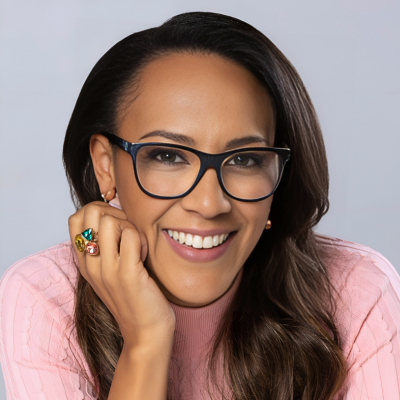
💡 What Skilled Migrants Get Wrong About Including Family on Australian Visas
When it comes to Australian skilled migration, one of the most misunderstood areas is how your partner and children can (and can’t) be included on your visa.
Every day, we speak to nurses, healthcare workers and other skilled professionals who think they can just “add” their spouse or kids to their visa later — the same way it’s done in some other countries.
🚫 That’s not how Australia works.
Australia’s migration system requires careful planning around who is included on your visa from the beginning. If you get this wrong, the consequences can be frustrating, expensive — or irreversible.
Let’s break down the most common misconceptions 👇
❌ “I’ll just sponsor my partner or children after I get to Australia”
Wrong. If you’re applying for a skilled visa, your immediate family must usually be included from the start — otherwise, they may not be eligible to join you later under the same visa.
People assume Australia allows post-arrival sponsorship of family like other countries. It doesn’t. In most skilled visa pathways, if your partner or kids aren’t on your application, they won’t get the same visa rights or timeline. You’ll need to submit a separate application for them — at significant extra cost and effort.
👉 It’s not just about paperwork. Adding someone later can result in:
-
Delays in reuniting with your family
-
Duplicate government fees
-
More complex health and character checks
-
The risk of visa refusal if they don’t meet eligibility rules
👫 What counts as a partner?
Australia recognises spouses and de facto partners (same or opposite sex). But being in a relationship isn’t enough.
To prove a de facto relationship, you must either:
-
Have lived together for at least 12 months continuously, or
-
Be registered as a de facto couple under civil law in a recognised state or country
💡 Just being engaged or dating doesn’t count.
Even having a child together is not enough without meeting the legal relationship test.
👶 What about children?
Children under 18 can usually be included — but once they’re over 18, the rules become strict.
To include a dependent child aged 18 to 23, they must:
-
Be your biological, step or adopted child
-
Be financially dependent on you
-
Be engaged in full-time study (e.g. university, vocational training)
-
Have no gaps between finishing secondary school and starting tertiary study
-
Not be married or in a de facto relationship
If your adult child has left school and started working — even briefly — they may no longer meet the definition of a dependent. And dependent children aged over 23 are only eligible in very limited cases, usually involving long-term disability — and even then, their medical condition could make them ineligible depending on the visa and the availability of health waivers.
👨👩👧👦 Can I include my siblings or parents?
No. Australia’s skilled migration visas are limited to your immediate nuclear family — that means:
-
Your spouse or de facto partner
-
Your dependent children
You cannot include your siblings, cousins, aunties, uncles, parents or friends. If you’re hoping to bring extended family members, they’ll need to apply for their own visa — and they may not qualify for one at all.
💸 Why adding them later doesn’t save you money
Some applicants think that applying solo first — then adding family later — is a clever way to save money.
🚫 Not true.
Separate family visas often cost more than including them in the initial application. You’ll also need to pay for:
-
Additional visa application charges
-
Duplicate health and character checks
-
New legal and processing fees
It’s not a shortcut — it’s a trap.
⚠️ Health and English requirements apply to the whole family
When including family members, you must also meet the mandatory health and English language requirements — not just for yourself, but for your partner and any children aged 18 or over.
Key things to know:
-
All applicants (main and dependents) must pass the required health checks
-
If any family member fails the health requirement, your entire visa application may be refused
-
If your partner or adult child cannot prove Functional English (either through an approved English test or by holding a passport from an exempt country like the UK, Ireland, USA or Canada), you’ll need to pay a Second Visa Application Charge — currently AUD $4,885 per person.
This is one of the most expensive hidden fees we see.
Before lodging, you need to be crystal clear on:
✅ Whether your family members meet these criteria
✅ Whether your visa allows for health waivers (many do not)
✅ What the consequences are if someone is ineligible
🇦🇺 Planning ahead protects your family
Don’t make the mistake of assuming Australia’s system works like the one you’re coming from. Whether you’re in the UK, Africa, Asia, Europe, or anywhere else — Australia has its own rules.
And when it comes to your family, those rules are strict.
👨⚕️ Nurses, healthcare workers, tradespeople, and skilled professionals should get advice before lodging anything — especially if your goal is to migrate with your family and settle long-term.
✅ Ready to take the right first step?
The journey starts with registration. If you’re a nurse planning to move to Australia, you can’t apply for any skilled visa until you’re registered with AHPRA.
That’s why we created the Nurse Registration Course — a self-paced, step-by-step roadmap to help you understand your AHPRA pathway and get started the right way.
Already registered or ready to talk strategy?
Book a consult with our legal team at SOLVi and let us guide your family’s migration journey with confidence.
Let’s make your migration simple, stress-free, and family-inclusive. 💙



.webp)

